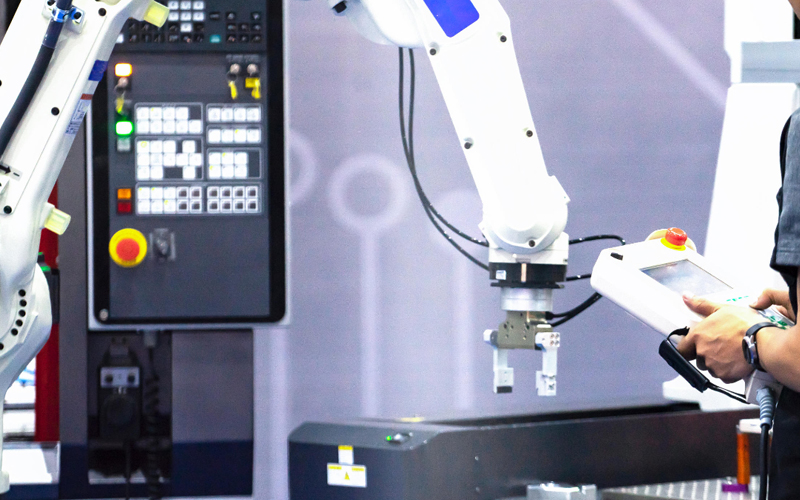Robotic Process Automation (RPA) is revolutionising business operations, with the global RPA market expected to grow at a staggering CAGR of 43.9%, reaching USD 8.8 billion by 2026. Industries such as healthcare and BFSI are increasingly adopting RPA to streamline operations, improve efficiency, and reduce costs.
This blog will explore how leading RPA companies deliver rapid ROI by optimising business processes, improving accuracy, and enhancing scalability, driving significant value across sectors.
Why RPA?
RPA combines software robots, AI integration, machine learning, and Optical Character Recognition (OCR) to automate repetitive, rule-based tasks across various business processes. The key components work together to streamline workflows, reduce human error, and enhance operational efficiency. Businesses are increasingly adopting RPA due to its ability to increase accuracy, reduce operational costs, and scale operations without adding staff. Unlike traditional automation, which often requires complex integrations and significant upfront investment, RPA offers flexibility and can be deployed swiftly with minimal disruption. This makes RPA a highly attractive solution for organisations seeking rapid, cost-effective improvements in productivity.
The benefits of RPA for improving the ROI
In the context of RPA, ROI is measured by the savings and efficiencies gained through automation compared to the initial and ongoing costs of implementing the solution.
Labour cost savings
RPA significantly reduces operational costs by automating tasks that traditionally require human labour, such as data entry, invoice processing, and customer service. As per a 2024 survey, 52% of financial services companies saved at least USD 100,000 annually through RPA.
Time saving
RPA dramatically cuts processing time. For instance, invoice processing that used to take several days can now be completed in a few hours, freeing up employees to focus on higher-value activities. This efficiency boost leads to quicker turnaround times and enhanced productivity.
Increased throughput
RPA allows businesses to handle a greater volume of tasks without increasing headcount. This scalability means businesses can process more transactions or complete more operations without the need for additional staff, contributing to higher productivity without additional costs.
Error reduction and improved accuracy
Human errors are inevitable, especially in critical industries like healthcare and finance. RPA significantly reduces these errors by following predefined rules and workflows, ensuring tasks are completed consistently and accurately. This leads to more reliable data processing and reduces the risk of costly mistakes, enhancing both operational efficiency and regulatory compliance.
The RPA workflow
RPA offers fast ROI through its streamlined deployment and flexible capabilities. Key factors that contribute to this rapid return include:
Rapid deployment and integration
RPA platforms ensure swift deployment with minimal disruption, integrating seamlessly with existing systems, even legacy ones. RPA companies can transform operations without affecting core systems, enabling quick automation without costly system overhauls.
Minimal IT overhead
Unlike traditional automation systems, RPA platforms require minimal IT intervention. These platforms run on standard hardware, significantly lowering upfront costs and enabling a faster time to value. This reduces the dependency on IT teams, accelerating ROI.
AI and machine learning integration
Leading RPA companies enhance ROI by integrating AI and machine learning. These technologies provide intelligent automation that can handle complex decision-making processes. For instance, AI-powered systems help reduce service desk engagement and improve efficiency in high-volume, repetitive tasks, leading to substantial time and cost savings.
Customisation and scalability
RPA solutions are highly customisable and scalable, ensuring that businesses can adapt automation to their specific needs. Industries like BFSI and insurance benefit from RPA's ability to streamline operations and scale according to growing business requirements, delivering continuous ROI as their operations expand.
Most effective use cases of RPA
Robotic process automation is transforming a variety of industries by automating repetitive tasks and improving efficiency. Some of the most effective use cases of RPA across sectors include:
Financial services
RPA is widely used for tasks such as invoice processing, fraud detection, and risk reporting. In financial institutions, RPA streamlines compliance checks, speeds up transaction processing, and reduces human error, leading to faster decision-making and enhanced customer service.
Healthcare
In the healthcare industry, RPA automates patient scheduling, records management, and insurance claims processing. By reducing administrative burdens, RPA allows healthcare professionals to focus on patient care while improving accuracy and compliance with regulations such as HIPAA.
Insurance
Insurance companies utilise RPA for claims processing, underwriting, and policy administration. RPA speeds up data entry, document management, and customer interactions, reducing operational costs and enhancing customer satisfaction.
Retail and e-commerce
In retail, RPA is used for inventory management, order processing, and customer support. By automating routine tasks, businesses can scale operations, reduce errors, and ensure faster delivery times, ultimately improving the customer experience.
How can Infosys BPM help with process automation?
Infosys BPM offers enterprises innovative robotic process automation solutions that deliver valuable and rapid results. The people-process-technology framework not only saves considerable expenses, but it also ensures metrics improvement and ROI enhancement.








